With a global adoption of hybrid and fully electric vehicles, where will the increased demand for energy come from? Most major European countries, North America, and Asia are still heavily reliant on non-renewable sources. Combine this with the process of mining lithium: how do we ensure that electric vehicles contribute to lowering global emissions and not simply shifting them elsewhere?
In this stream, we will discuss the infrastructure requirements needed to service the demand. How will the energy companies and the fuel giants adapt to meet the rise in EV use? Charging technologies will need to advance quickly, speed and efficiency being key drivers, and become available for widespread use. We will explore the development of wireless charging technology and roads that will generate electricity to provide circular renewable energy for the future of mobility.
Alternative and renewable energy sources, including fuels, hydrogen cells, and carbon-neutral technologies, will also be presented and discussed.
A collection of speakers from energy and fuel companies, automotive manufacturers, and leading consultants will present solutions to tackle the increasing transport energy demand.

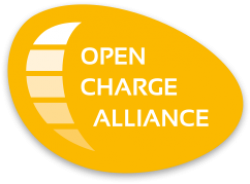

Brett Hauser
Board of Directors
Alliance of Transportation Electrification & Open Charge Alliance
USA

Synopsis: The growing adoption of EVs brings new and unprecedented challenges for electrical utilities and the power grid. It is expected that the number of EVs on the road will increase from 5 million today worldwide to 500 million by 2040. This means that power demand from EVs will increase from 74TWh in 2019 to 2,233TWh in 2040, representing an increase of 6.8% in power consumption worldwide. In the United States, the acceleration in electrification of transportation can have serious implications on the load curve, especially when a group of EVs are connected to the grid simultaneously for charging. Realizing the full potential of electrification of transportation will require new grid edge technologies to ensure that there is enough power supply to power EVs without compromising the reliability of the electrical grid and avoid the need for costly infrastructure upgrades. Utilities and grid operators in the US need to leverage a variety of tools to help manage EV charging to accommodate the transition to electrified transportation. Realizing the full potential of electrification of transportation will require new grid edge technologies to ensure that there is enough power supply to power EVs without compromising the reliability of the electrical grid and avoid the need for costly infrastructure upgrades. Technologies such as site level energy management, integrated distributed energy resources (DERs) and energy storage, time of use rates, and EV-based demand response programs will allow drivers to have access to reliable charging while minimizing the impact on the utility grid. As one of the most complex energy loads to date, demand placed on the grid from EV charging is unpredictable and can spike at a moment’s notice. Utilities and grid operators need to leverage a variety of tools to help manage EV charging to accommodate the transition to electrified transportation.

Lluís Alegre
mobility director
ATM Barcelona
SPAIN
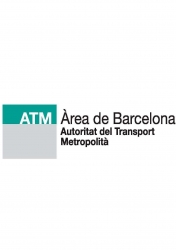
Synopsis: One particularly efficient measure to tackle pollution in urban areas is the electrification of buses. The project represents a huge challenge for the transport sector, first because high initial investment is required to set up the electricity infrastructure, and second because electric buses are not in widespread production and the purchasing cost of electric vehicles is more expensive than for conventional buses. The electrification of the public transport bus fleets requires at least a regional plan with a long-term vision that guarantees enough electricity supply from renewable sources, making the infrastructure and supply more efficient.
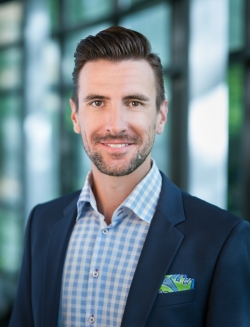


Gernot Hacker
senior product manager, electrified propulsion systems
AVL List GmbH
AUSTRIA

Synopsis: The connection of the automobile with its environment and autonomous driving enables highly efficient and safe operation of the automobile and will create new mobility scenarios. The demands for significant reductions in CO2 and pollutants have a lasting impact on both the manufacturing cost of vehicles and the necessary investments in infrastructure. For sufficiently rapid market penetration, new propulsion technologies must be affordable for the customer and there must be a correspondingly attractive infrastructure available. Mid-term, a shift from CO2 assessment to well-to-wheel, possibly even a broader lifecycle approach, is expected. This presentation will discuss the right technology choice for future propulsion.

Rubina Singh
channel propositions manager
Centrica Business Solutions
UK

Synopsis: The transport landscape has undergone unprecedented change over the past decade and is set to continue developing rapidly as the automotive industry electrifies. This will also require significant additional grid capacity to support the rapid expansion of EVs. Developing the right infrastructure is paramount to enable this transition. A combination of smart technologies along with distributed energy systems can not only help address the power challenge but also create opportunities in the future to enable a fully integrated grid. What will the future of e-mobility look like? This presentation will address how seamless grid integration of EVs can be enabled.

John Palmour
CTO - power and RF
Cree Inc
USA

Synopsis: Flying cars and autonomous vehicles are interesting and futuristic, but the key to achieving these technologies lies within mastering the electric vehicle. It’s estimated that 3.6 million EVs will be manufactured by 2022, and auto makers have committed billions of dollars to growing their fleets. The task of mastering the EV may seem daunting, but in reality it's quite simple. This presentation will explore the invisible revolution of silicon carbide (SiC) technology, which has the power to transform the future of the automotive industry and overcome the challenges facing EVs, including range anxiety, inadequate infrastructure and charging time.

Michael Stautz
manager innovation strategy
E.ON SE
GERMANY

Synopsis: Autonomous driving and not the question of propulsion technologies will be THE game-changer. People will no longer own cars; they will use them. Mobility is likely to become a commodity. Platform providers for mobility services will dominate the transport sector for passengers and goods. Modular vehicle systems (passengers and goods) are likely to become the standard for mobility platforms. Fleet operators are eager to increase the operational hours of the vehicles charging the autonomous fleet. The charging business is changing from mainly B2C today to B2B only in the future. Fueling vehicles will become an M2M (machine-to-machine) business in urban fleet charging spots. Inductive charging will develop to a default technology with an outlook toward dynamic inductive charging.

Celine Cluzel
director
Element Energy
UK

Synopsis: This presentation will summarize key lessons and real-world implications from recent projects that assessed complementary aspects of battery life, answering the following questions. How long will batteries last in a car, and will managed charging affect this? (Degradation findings based on a state of health model that uses real-world usage data under different charging behavior.) What are the current recycling options in Europe? Is there enough capacity? What are the costs of repurposing batteries and competitiveness with new batteries? (From a T&E study that supports lobbying for an update of the Battery Directive.)
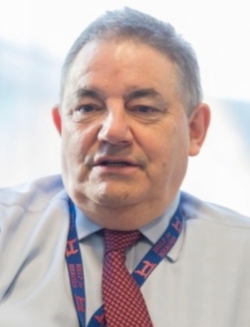
David Hytch
head of strategy and innovation
Franklin Energy Limited
UK

Synopsis: The initial excitement around the availability of EVs and other low-carbon vehicles created the debate around charging and range. This paper will examine how the charging industry and energy suppliers are taking the steps necessary to provide Charging as a Service to ensure that the refueling network can meet demand for all use cases in the future. The demand from private cars differs from that of taxis, commercial vehicles, public transport and off-road vehicles. The paper will show how these can be addressed individually and in a way that fits with wider energy accounts.

Egbert Hünewaldt
CEO
Green Business Development GmbH
GERMANY

Synopsis: As an introduction, we will explore the current situation in Europe for battery electric vehicles (BEV), the charging infrastructure, the volume of new registrations and the consequences of this. We will then move on to fuel cell electric vehicles (FCEV), exploring the advantages and disadvantages of hydrogen vs BEV. We will also highlight possible future options for powering vehicles. A country can be at the forefront of alternative mobility, but a sustainable solution is only possible at the European level.

Jacopo Tattini
transport and energy analyst
International Energy Agency
FRANCE

Synopsis: Electric mobility continues to grow rapidly, supported by policies, by cost reductions achieved via technology developments and by the increased dynamism of market actors. The International Energy Agency’s Global EV Outlook 2019 (GEVO2019) analyzes the status of electric mobility and explores its future development. It projects that the global EV stock in 2030 will reach more than 130 and 250 million respectively in the New Policy Scenario and EV30@30 Scenario. GEVO2019 assesses the implications for electricity demand, oil displacement and well-to-wheel GHG emissions, and compares lifecycle GHG emissions across different powertrains, finally reflecting on the sustainability of the EV battery materials supply chain.
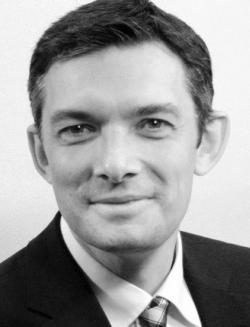
Daniel Dörflinger
CEO
IPT Technology GmbH
GERMANY

Synopsis: The key to the successful introduction of e-mobility is to make it a leap forward in user experience. A high level of automation will be key to a positive user experience. As a consequence, wireless charging can play a key role in the successful implementation of future transportation solutions.
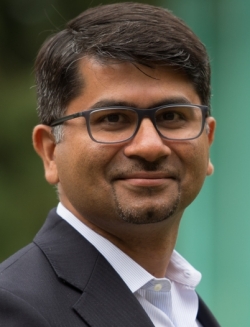
Ashish Khanna
partner
L.E.K. Consulting
UK

Synopsis: Electric vehicles (EVs) represent the future of transportation. Car manufacturers are announcing plans to produce greater volumes and models, and governments are actively encouraging their adoption through incentives. Yet, despite a rapid escalation in EV investment in recent years, consumers have been slow to respond. So what exactly does it take to encourage the mass adoption of EVs? L.E.K. Consulting examines the three most important supply and demand factors that will drive EV uptake: cost competitiveness with ICEs, access to public infrastructure, and EV model availability. We also discuss the implications for original equipment manufacturers and policymakers.
Synopsis: New mobility trends, such as ride hailing and electrification, are driving improved transportation cost structures and bringing significant opportunities to the value chains of businesses. With the right approach, businesses across the economy can see mobility as a stimulus for business model innovation – but how can they identify new revenue opportunities and leverage new mobility services to improve their operating efficiency? L.E.K. Consulting’s Mobility as a Platform (MaaP) framework provides a lens through which businesses can consider options for growth, highlighting three key opportunities: acquiring new customers, improving customer experience and driving loyalty, and increasing the efficiency of business operations.

Ruth Knox
managing associate
Linklaters
UK

Synopsis: This presentation will draw on analysis from our Thought Leadership Report on regulatory and market challenges across the battery lifecycle. Topics will include sourcing raw materials; battery manufacturing; incorporation into, and sale of, EVs; the recharging of EVs; and finally battery recycling.
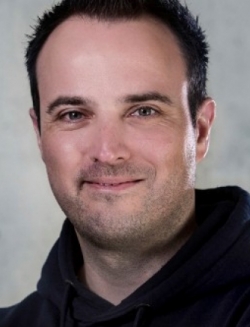
Sebastian Ewert
head of corporate startup chargeBIG
Mahle International GmbH
GERMANY

Synopsis: There are many opinions regarding battery electric vehicles, especially addressing range anxiety and lack of power grid capability. Charging a fleet of battery electric vehicles – in a large-scale approach – is possible by applying intelligence to the system. By compensating the peak power limitations of the grid, an intelligent system can feed the necessary energy to the fleet of electrical vehicles, even compensating other electrical loads on the grid. Equipping parking spaces with large-scale, affordable chargeBIG infrastructure helps to avoid range anxiety, because you can charge your vehicle every time it is parked. Charging as fast as necessary, not as fast as possible, is the missing link for battery electric vehicles.

Andrew Daga
president and CEO
Momentum Dynamics
USA

Synopsis: The presentation will discuss the essential need for automatic inductive charging of EVs. The first project presented will be a battery electric transit bus that has been in service in the State of Washington for two years without interruption of service. The 200kW inductive charger has extended the all-weather driving range of the bus so that it can drive long routes using opportunity charging while keeping the battery state of charge constantly above 70%. The presentation will also describe the upcoming 24/7 electric taxi program being installed in Oslo, Norway. None of these vehicles rely on conductive charging and operate completely automatically.

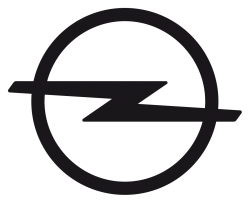

Tanuj Singh
manager - fuel economy learning vehicles and CO2 innovation
Opel Automobile GmbH
GERMANY

Synopsis: Vehicle electrification is a key enabler for meeting future CO2 emission targets. An exponential increase in BEVs globally would massively increase the demand for charging current. Mainstream solutions of stationary charging stations come with high investment costs/space utilization and poor utilization rates, among other challenges. With this changing paradigm, how does the customer experience change? What are the constraints? What solutions are predominantly foreseen to meet market demand? Mobile EV charging solutions presented here aim to deliver ‘on-demand’ EV charging at the customer’s location. They could complement mainstream solutions for specific use-cases and customer segments, and could be an attractive option in the future. Successful implementation would require a holistic systems strategy, integrated services model, industry cooperation, legislative support and public attention.

Jörg Reimann
CEO
PARK NOW/CHARGE NOW
GERMANY

Synopsis: Is EV adoption suffering from range anxiety and a lack of charging infrastructure? What is today's reality and what is important for the future of electrified mobility? The presentation will give an insight into the challenges for adoption of electromobility and solutions to simplify charging in the ecosystem of electromobility.

Olivier Menuet
president
SNCF Energie
FRANCE

Synopsis: SNCF Group is one of the world's top companies in passenger and freight mobilities (annual turnover: €34bn) and the top electricity consumer in France. Its total annual energy consumption is 17TWh for a spend of €1.2bn. The presentation will discuss the implementation of SNCF's strategic roadmap toward 'responsible and sustainable energy': efficiency, greening the mix, procurement performance, production and self-consumption, and technologies (hybridization, hydrogen, etc).

Thomas Bernin
strategy and development officer
Spacetrain
FRANCE

Synopsis: Spacetrain is a French company developing a high-speed (500km/h) transportation system powered by hydrogen fuel cells for inter-urban trips. The presentation will discuss the recent emergence of hydrogen mobility (automotive, rail), and outline the technical progress in the hydrogen sector, focusing on Alstom's hydrogen train but also the progress made in hydrogen storage and fuel cell capacity. There will also be a discussion on the future of the hydrogen mobility sector with a focus on the aviation industry and high-speed mobility.
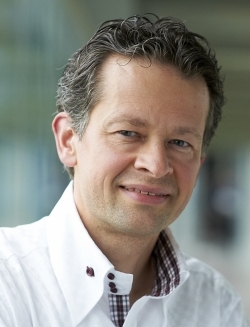
Stephan Herbst
technical general manager hydrogen
Toyota Motor Europe
BELGIUM
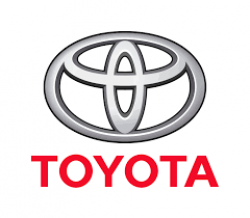
Synopsis: Decarbonizing the transport sector requires an acceleration in the development of electric and hydrogen vehicles. This presentation focuses on Toyota's approach and the wider systems implications.
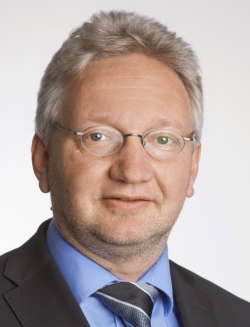
Volker Blandow
global head of e-mobility
TÜV Süd China Holding
HONG KONG
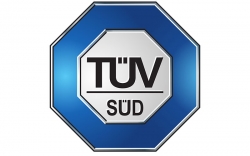
Synopsis: Developments in the global vehicle population – which grows at a rate of 100 million vehicles every three years – are drastically exacerbating the emission situation locally and globally. What are the answers to this global challenge? Electrification has to materialize way earlier than many stakeholders believe today. There are various technical options to make this happen: battery-powered EV, hydrogen-powered EV or even dynamic inductive charging systems. What are the advantages of the different options? What does an overall strategy including an energy transition look like? What challenges are we facing on the materials side if the whole world goes electric?

Michael Whiteley
director of strategic alliance
UCL
UK

Synopsis: The automotive industry is going through its biggest transformation since the introduction of the internal combustion engine in the late 1800s. Electrification R&D is well underway and expanding rapidly, leaving a void in the knowledge base in relation to how battery systems behave and degrade during use under varied load profiles. The Advanced Propulsion Lab at University College London is a world leader in battery diagnostics. This talk looks into the various techniques that can be used to determine battery degradation and ultimately mitigation to increase battery life.

Limhi Somerville
battery systems technical specialist
Vertical Aerospace
UK

Synopsis: The electrochemical battery is one of the newest and most technically challenging parts of an eVTOL. In this presentation, key battery design features and testing are discussed in terms of capability to meet demanding certification requirements and practicality on-vehicle. The presenter will draw extensively from previous experience in the automotive industry dealing with the interface between electrochemical constraints, the physical design of the battery and the capability of the battery management system.

Victoria Markewitz
business development principal
ViaVan
GERMANY

Synopsis: In public-private partnerships (P3) around the world, cities and new mobility companies are taking steps toward an all-electric future. This session will share lessons learned from Via’s EV deployments in partnership with transit operators around the world. In Auckland, New Zealand, Via partnered with GoBus to deploy the first on-demand transit P3 to use a fully electric fleet. Furthermore, ViaVan’s partnership with the BVG in Berlin is the largest public-sector on-demand deployment in the world and is operated by a 60% all-electric fleet.
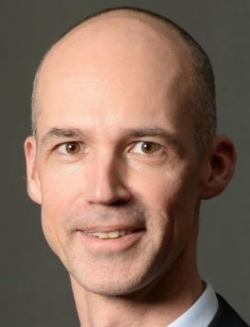
Peter Wambsganss
director business development, Europe - automotive
WiTricity
GERMANY

Synopsis: The future of transportation is electric, and wireless charging serves as a catalyst for the increased adoption of electric vehicles. Wireless charging is as efficient and as fast as conventional plug-in charging, much more convenient, and essential for the electric autonomous vehicles of the near future. With the explosive growth taking place in Mobility as a Service, WiTricity is poised to provide a solution for a future that is electric, shared and autonomous.